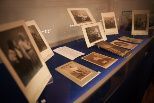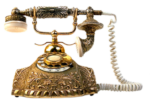Rimsky-Korsakov Museum

Rimsky-Korsakov Museum
Rimsky-Korsakov’s apartment is a unique composer’s museum in St. Petersburg. Here Rimsky-Korsakov spent last 15 years of his life and composed 11 of 15 operas. Memorial part of the Museum consists of 4 rooms – study, living and dining rooms, anteroom, where one collected original family things. As before, this apartment hosts chamber evenings, inviting leading soloists of theatres and philharmonic halls. During the weekend, one can find this museum full of toddlers and their parents. Twice a year they change a temporary exposition.
Practical information
Adress: 28 Zagorodny Pr., 196002, St. Petersburg
- Opening hours: Thursday–Sunday 11 a.m.–6 p.m. (box office till 5.30 p.m.) Wednesday 1 p.m.–9 p.m. (box office till 8 p.m.)
- Monday, Tuesday and last Friday of every month
- For additional info, excursions and concerts booking please call: (812) 713–32–08
- Email us to rimkornik@mail.ru
Exhibitions

Exhibitions/
Twice a year the Museum changes a temporary exhibition hall and shows different operas of the composer in its historical view. The collection of the Theatre Museum consists of original costumes of 19th century, scenery and production, authentic photographs.
Hidden treasures at Rimsky-Korsakov museum
https://www.artsy.net/article/lidia-ader-hidden-treasures-at-rimsky-korsakov-museumFor many years now 28, Zagorodny Prospekt, a quiet corner of the historical centre of St Petersburg, has been the location of the Rimsky-Korsakov apartment museum.
The five-story building is surrounded with greenery and remote from the noise of the passing traffic, but in general it is unremarkable and very similar to many other apartment houses built in the then Russian capital in the 19th century. Professor Rimsky-Korsakov of the St Petersburg Conservatory Moved into an apartment here in the autumn of 1893 and spent the last 15 years of his life here, until his death in 1908. After the 1917 revolution the composer’s widow, Nadezhda, was forced to leave the apartment and moved in with her son Andrei in early 1918. For a long time the apartment on Zagorodny Prospect served as a ‘kommunalka’, with ten families (over twenty people in total) living there for a long time.
Before she moved out, Nadezhda sorted and catalogued her husband’s manuscripts, music library, posters, programmes, photographs, treasured gifts, tributes and family heirlooms. This large collection later formed the basis of the museum. At the beginning of the 1920s, Rimsky-Korsakov’s children transferred the composer’s creative output to the Public Library’s Manuscript Department. The dream of setting up a museum only became a realistic idea in 1967 when a decision was taken by the state to found an apartment-museum, following the untiring efforts of three generations of Rimsky-Korsakovs for over fifty years. Major repairs were made to the whole building and the apartment restored. Inside there remained originaltiled corner stoves, an elegant marble fireplace, tall folding doors, and window fanlights with bronze handles and bolts. The patterns and colour of the original wallpaper were revealed underneath subsequent layers of wall coverings.
More than 250 items, carefully preserved by the composer’s family, were given to the museum and put back in their original places in the study, hall, drawing room and dining room. The completeness and authenticity of these rooms make the museum particularly invaluable. The other rooms in the apartment were renovated to create an exhibition room and concert halls in homage to the composer.
On 27th December 1971 a museum was founded in memory of the composer Nikolai Rimsky-Korsakov in his final St. Petersburg home.
The materials in the exhibition room give an idea of the diverse activities of Rimsky-Korsakov as composer, teacher and conductor. Various documents tell about his work at the Free Music School, Court Capella and the St. Petersburg Conservatoirewhere he was involved for thirty-seven years. The calibre of the composer’s students — Glazunov, Lyadov, Arensky, Grechaninov, Cherepnin, Myaskovsky, Prokofiev and Stravinsky — attests to his gift for teaching. The most precious exhibit is the ‘golden pen’, given to the composer in 1880 on the première of his opera May Night. From then on Rimsky-Korsakov used this pen to write all his compositions, letters, and his journal My Musical Life.
The last period of Rimsky-Korsakov’s life was his most creative. During this time he composed eleven of his fifteen operas, including Christmas Eve, Sadko, Mozart and Salieri, The Tsar’s Bride, Kaschey the Immortal, The Legend of the Invisible City of Kitezh and the Maiden Fevroniya, The Golden Cockerel, and over 40 romances. The composer’s study does not contain a piano: Rimsky-Korsakov usually worked at a writing desk, trusting his unique inner ear. At another desk would sit Nadezhda, faithful assistant in all her husband’s musical undertakings, making corrections and piano arrangements of his symphonic and operatic works. In her youth Nadezhda had herself composed music and was a brilliant pianist.
Musical soirées would take place in the drawing room. By 1905 these had become such regular events as to be known as the “Korsakov Gatherings”. Despite there being no forward planning for these evenings, they always proved entertaining. Composers such as Glazunov, Lyadov, Stravinsky, Taneyev, Scriabin and Rachmaninov gave premières of their own works, and the singers Fyodor Shalyapin, Nadezhda Zabela-Vrubel and Yevgeniya Mravina performed, accompanied by Rimsky-Korsakov’s wife. A Becker piano, acquired by Rimsky-Korsakov in 1902, now stands in the drawing room as it did then. The customary “Korsakov Gatherings” still take place to this day, with concertgoers attracted by the warm intimate atmosphere.
Of particular interest in the dining room are the portraits of Rimsky-Korsakov’s forebears,painted by unknown artists in the 18th to early 19th centuries. The composer belonged to an ancient noble family descended from Ventseslav Korsak, who came to Russia from Lithuania and whose progeny later russified their surname to ‘Korsakov’. In 1677 Tsar Fyodor Alekseyevich allowed a number of Korsakovs the highest concession of adding the prefix ‘Rimsky’ (meaning ‘Roman’ in Russian) to their surname, on the basis that their ancient forebears had been subjects of the Roman state. Nikolai Rimsky-Korsakov belonged to the fourteenth generation descended from Ventseslav Korsak and was the sixth descendant of the original Rimsky-Korsakov.
The museum’s intimate chamber concert hall is popular with both novice musicians and established performers. Thanks to its recently opened new concert hall on the ground floor, the museum now attracts large audiencesand has significantly increased its activities.
里姆斯基-科萨科夫故居博物馆

Rimsky-Korsakov Museum
作曲家生平
尼古拉·安德烈耶维奇·里姆斯基-科萨科夫(1844 — 1908),作为俄国沙皇时期著名的作曲家,堪称是俄国歌剧的巨匠。他与鲍罗丁、穆索尔斯基、巴拉基列夫和居伊并列为“强力集团”中的一员。 里姆斯基-科萨科夫一生中创作了15部歌剧,多部管弦乐,特别是标题音乐、合唱曲、室内乐、钢琴作品,歌曲和改编曲。他的歌剧中最为人熟知的有《普斯科夫姑娘》、《五月之夜》、《雪女郎》《圣诞节前夜》、《萨特阔》、《沙皇的新娘》、《萨坦王的故事》等。 里姆斯基-的交响音乐作品具有其标志性的神话传说和民族色彩。其中最为代表性的作品当为第二交响曲“安塔尔”。在其他管弦乐方面,最能突出其独特创作风格的作品则当属“西班牙狂想曲”和“舍赫拉查达”。 里姆斯基-科萨科夫于1871年成为圣彼得堡音乐学院的教授。从1874年到1881年他是无偿音乐学校的领导,同时也是指挥家和教育家。他的学生中知名的有:亚历山大·格拉祖诺夫、奥托里诺·雷斯皮基、斯特拉文斯基普、罗科菲耶夫等。 在1905年俄国第一次革命时期,里姆斯基-柯萨科夫因维护革命学生而被解除了在音乐学院的教授职位。但是解聘他的这一事件激起了全国抗议迫害的浪潮。最后,由于彼得堡音乐学院新院长格拉祖诺夫的邀请,他终于重新回到音乐学院。 不幸因其长年遭受心绞痛的困扰,里姆斯基-柯萨科夫于1908年6月21日因病发而逝世。
关于故居博物馆
里姆斯基-科萨科夫故居博物馆是作曲家在圣彼得堡的最后定居处,其家人于1893年秋季入住于此。这是个外形其貌不扬,坐落于庭院深处的五层小楼,周围绿化环抱,远离市区喧嚣。作曲家在这栋楼的第三层住宅里度过了他多产的余生15年。 在1917年革命后,作曲家的遗孀被迫离弃此宅。此后很久,此宅被转化为公用房屋——上世纪50年代时,有10家人家,多余20人居住于此宅内。 幸而其遗孀逃难之前,得以将作曲家的原稿归纳整理。因此,其庞大的收藏规模成为了此博物馆的坚实奠基。但创建故居的构想到1967年才得以初具规模。而这个梦想通过3代作曲家后代,50多年孜孜不倦的努力才终于得到实现。 博物馆随后经历了大规模翻修装潢,故居原物得以重回原位。因作曲家的后裔将多于250件珍藏的物件转交于此馆,现今馆内不仅藏有作曲家的个人物什,亲笔原稿,同时还有属于19世纪独一无二的日常实物,以期访客们能够更加深刻地体会其故居的环境氛围和作曲家的创作精神。 演奏厅不大但温馨,无论是在青年音乐家,还是知名演奏家中都很受欢迎;展览厅内的展品充分展现了作曲家多向全能的一生——作曲,教授,指挥。这些文件见证了作曲家在无偿音乐学校的贡献,在皇家音乐团内的职务,以及其在圣彼得堡音乐学院37年的教学生涯。 在展品中具有十分特殊意义的则是“金鹅毛笔”,它是在作曲家所创歌剧“五月夜”(1880)首演时赠与他的礼物。从那时起,作曲家所有的音乐创作,信件,回忆录都是用这只笔写的。这最后一段岁月是作曲家最多产的时期——15部歌剧中的11部创作在此时。但是,在作曲家的书房内并没有钢琴,而是全凭其不同寻常的想象听感。他时常在书桌前工作,而书桌的另一头则是他的妻子 ——作曲家所有音乐活动的贤内助。她年少时也曾有过音乐创作,并是一位出类拔萃的钢琴家。 作曲家生前,在他们的客厅里曾常常举办音乐晚会。从1905年起这种晚会渐成习惯,并被人称为“科萨科夫的星期三”。传统的“科萨科夫的星期三”至今仍存在——博物馆内每周都会举办各种形式的音乐活动,除了吸引更多听众和访客外,更加希望作曲家的音乐创作精神能够得以传承发扬。
基本信息
地址: 28, Zagorodny Prospekt 到达方式: 搭乘地铁红线至Vladimirskaya站,或至橙线Dostoyevskaya站后可步行,也可搭乘公交K-177; 如搭乘地铁紫线至Zvenigorodskaya站,可步行至博物馆 开放时间: 周四至周日11:00-18:00(17:30停止售票) 周三 13:00-21:00(20:00停止售票) 每周一,每周二以及每月最后一个周五闭馆 门票: 100卢布 电话: +7 (812) 713-3208 网址:
Новости
里姆斯基-科萨科夫故居博物馆

Rimsky-Korsakov Museum
作曲家生平
尼古拉·安德烈耶維奇·裏姆斯基-科薩科夫(1844 — 1908),作為俄國沙皇時期著名的作曲家,堪稱是俄國歌劇的巨匠。他與鮑羅丁、穆索爾斯基、巴拉基列夫和居伊並列為“強力集團”中的一員。 裏姆斯基-科薩科夫一生中創作了15部歌劇,多部管弦樂,特別是標題音樂、合唱曲、室內樂、鋼琴作品,歌曲和改編曲。他的歌劇中最為人熟知的有《普斯科夫姑娘》、《五月之夜》、《雪女郎》《聖誕節前夜》、《薩特闊》、《沙皇的新娘》、《薩坦王的故事》等。 裏姆斯基-的交響音樂作品具有其標誌性的神話傳說和民族色彩。其中最為代表性的作品當為第二交響曲“安塔爾”。在其他管弦樂方面,最能突出其獨特創作風格的作品則當屬“西班牙狂想曲”和“舍赫拉查達”。 裏姆斯基-科薩科夫於1871年成為聖彼得堡音樂學院的教授。從1874年到1881年他是無償音樂學校的領導,同時也是指揮家和教育家。他的學生中知名的有:亞歷山大·格拉祖諾夫、奧托裏諾·雷斯皮基、斯特拉文斯基普、羅科菲耶夫等。 在1905年俄國第一次革命時期,裏姆斯基-柯薩科夫因維護革命學生而被解除了在音樂學院的教授職位。但是解聘他的這一事件激起了全國抗議迫害的浪潮。最後,由於彼得堡音樂學院新院長格拉祖諾夫的邀請,他終於重新回到音樂學院。 不幸因其長年遭受心絞痛的困擾,裏姆斯基-柯薩科夫於1908年6月21日因病發而逝世。
關於故居博物館
裏姆斯基-科薩科夫故居博物館是作曲家在聖彼得堡的最後定居處,其家人於1893年秋季入住於此。這是個外形其貌不揚,坐落於庭院深處的五層小樓,周圍綠化環抱,遠離市區喧囂。作曲家在這棟樓的第三層住宅裏度過了他多產的余生15年。 在1917年革命後,作曲家的遺孀被迫離棄此宅。此後很久,此宅被轉化為公用房屋——上世紀50年代時,有10家人家,多余20人居住於此宅內。 幸而其遺孀逃難之前,得以將作曲家的原稿歸納整理。因此,其龐大的收藏規模成為了此博物館的堅實奠基。但創建故居的構想到1967年才得以初具規模。而這個夢想通過3代作曲家後代,50多年孜孜不倦的努力才終於得到實現。 博物館隨後經歷了大規模翻修裝潢,故居原物得以重回原位。因作曲家的後裔將多於250件珍藏的物件轉交於此館,現今館內不僅藏有作曲家的個人物什,親筆原稿,同時還有屬於19世紀獨一無二的日常實物,以期訪客們能夠更加深刻地體會其故居的環境氛圍和作曲家的創作精神。 演奏廳不大但溫馨,無論是在青年音樂家,還是知名演奏家中都很受歡迎;展覽廳內的展品充分展現了作曲家多向全能的一生——作曲,教授,指揮。這些文件見證了作曲家在無償音樂學校的貢獻,在皇家音樂團內的職務,以及其在聖彼得堡音樂學院37年的教學生涯。 在展品中具有十分特殊意義的則是“金鵝毛筆”,它是在作曲家所創歌劇“五月夜”(1880)首演時贈與他的禮物。從那時起,作曲家所有的音樂創作,信件,回憶錄都是用這只筆寫的。這最後一段歲月是作曲家最多產的時期——15部歌劇中的11部創作在此時。但是,在作曲家的書房內並沒有鋼琴,而是全憑其不同尋常的想象聽感。他時常在書桌前工作,而書桌的另一頭則是他的妻子 ——作曲家所有音樂活動的賢內助。她年少時也曾有過音樂創作,並是一位出類拔萃的鋼琴家。 作曲家生前,在他們的客廳裏曾常常舉辦音樂晚會。從1905年起這種晚會漸成習慣,並被人稱為“科薩科夫的星期三”。傳統的“科薩科夫的星期三”至今仍存在——博物館內每周都會舉辦各種形式的音樂活動,除了吸引更多聽眾和訪客外,更加希望作曲家的音樂創作精神能夠得以傳承發揚。
基本信息
地址: 28, Zagorodny Prospekt 到達方式: 搭乘地鐵紅線至Vladimirskaya站,或至橙線Dostoyevskaya站後可步行,也可搭乘公交K-177; 如搭乘地鐵紫線至Zvenigorodskaya站,可步行至博物館 開放時間: 周四至周日11:00-18:00(17:30停止售票) 周三 13:00-21:00(20:00停止售票) 每周一,每周二以及每月最後一個周五閉館 門票: 100盧布 電話: +7 (812) 713-3208 網址:
Новости


